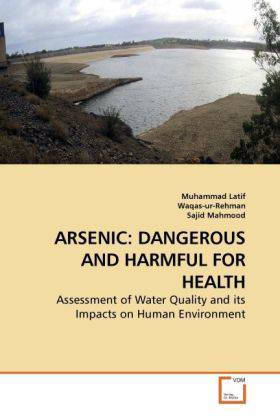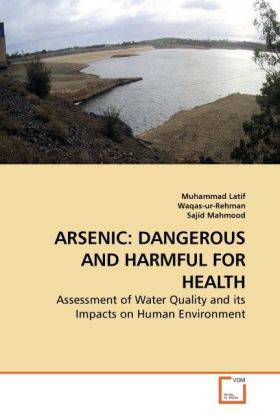
- Afhalen na 1 uur in een winkel met voorraad
- Gratis thuislevering in België vanaf € 30
- Ruim aanbod met 7 miljoen producten
- Afhalen na 1 uur in een winkel met voorraad
- Gratis thuislevering in België vanaf € 30
- Ruim aanbod met 7 miljoen producten
Zoeken
Arsenic: Dangerous and Harmful for Health
Assessment of Water Quality and its Impacts on Human Environment
Muhammad Latif, Waqas-ur- Rehman, Sajid Mahmood
Paperback | Engels
€ 64,45
+ 128 punten
Omschrijving
Arsenic is categorized as the most familiar element existing in natural world. It is mainly divided all through the earth s coatings and usually located in the environment, sands, clay soils, rocks, and micro- organisms and in fresh waters. The compounds of arsenic that actually exists in grains are very dangerous and harmful and sure passes through the human body very quickly. Arsenic in the form of inorganic is most contaminated in nature. It is dumped into the body and attains more concentration with the passage of time and cause long-life damages and defects. The present study aimed in comparing the environmental impacts as especially on soil and groundwater and health hazards involved as a result of presence of Arsenic. The authors has presented his work chapter wise in this technical book.The authors appreciate the efforts of Barthlemy Chaton and his team in providing guidance for book finalization and highly acknowledge publishing of it by VDM Publishing House Ltd. for scientific knowledge sharing in the subject of wastewater irrigation globally that certainly would be valued in future.
Specificaties
Betrokkenen
- Auteur(s):
- Uitgeverij:
Inhoud
- Aantal bladzijden:
- 104
- Taal:
- Engels
Eigenschappen
- Productcode (EAN):
- 9783639251333
- Verschijningsdatum:
- 23/04/2010
- Uitvoering:
- Paperback
- Afmetingen:
- 152 mm x 229 mm
- Gewicht:
- 163 g

Alleen bij Standaard Boekhandel
+ 128 punten op je klantenkaart van Standaard Boekhandel
Beoordelingen
We publiceren alleen reviews die voldoen aan de voorwaarden voor reviews. Bekijk onze voorwaarden voor reviews.








